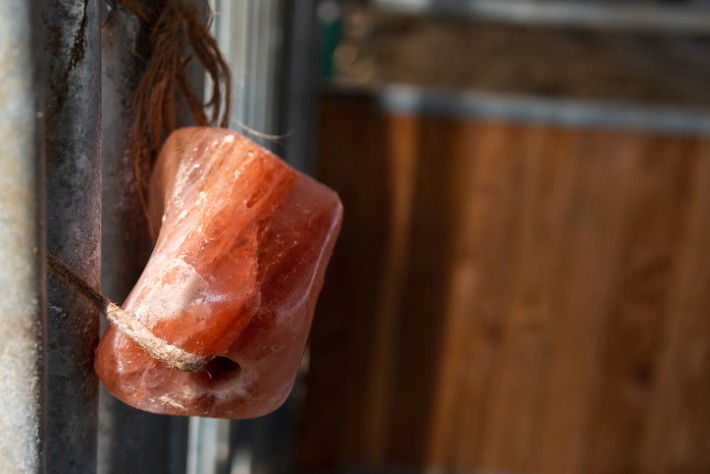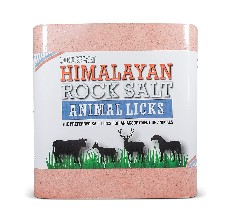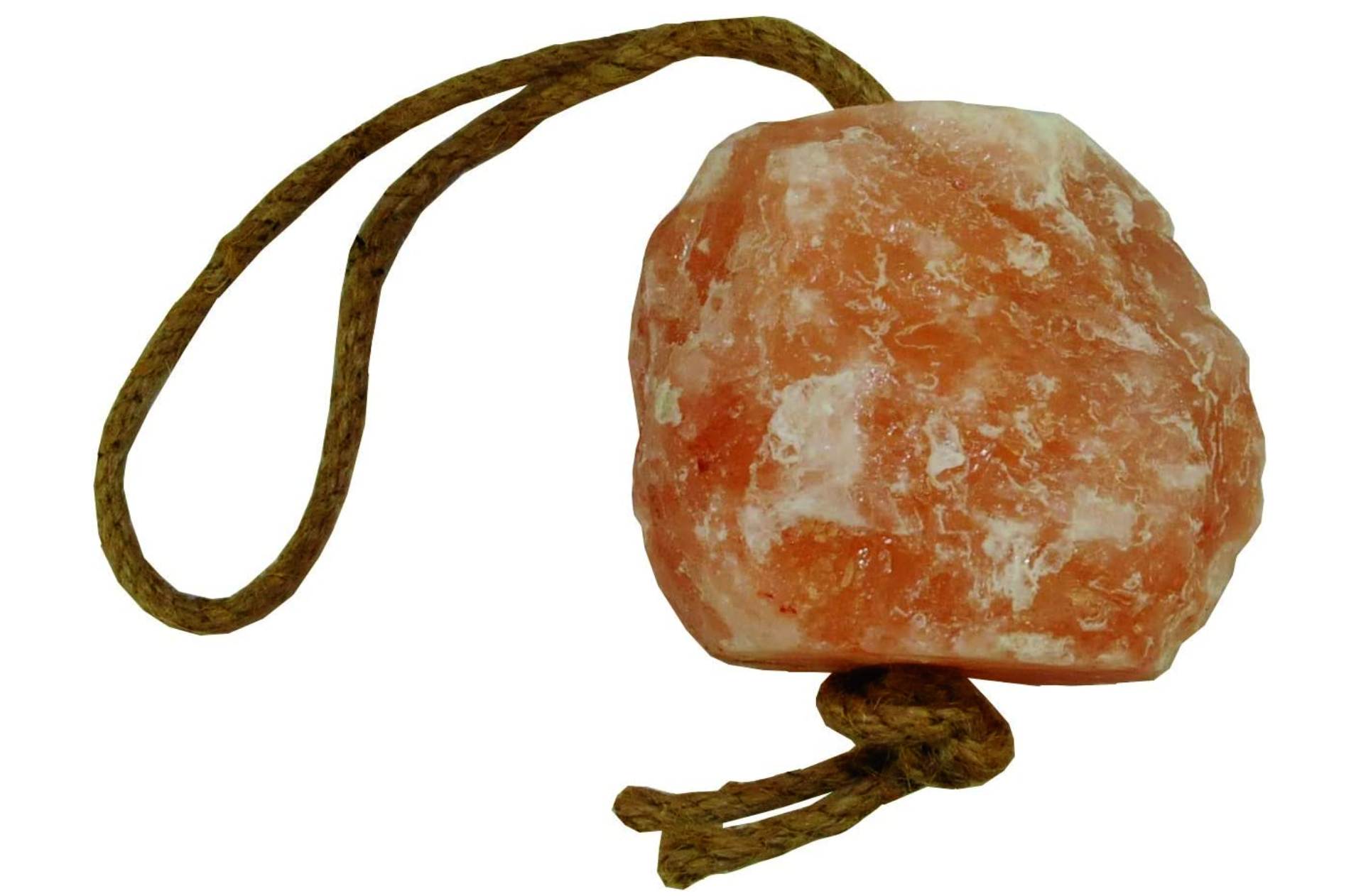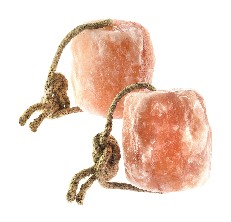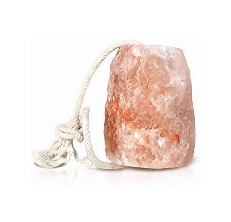- Flowers & PlantsVegetablesOur content is meticulously curated through independent research, testing, reviews, and AI-driven recommendations, all designed to present you with the finest product choices. When you make a purchase through our links, it could result in us earning a commission.
The Best Salt Lick for Deer to Maximize Mineral Intake
Last updated: Apr 24, 2024
When you see a deer, the world’s noise just fades. Catching sight of a deer isn’t just cool; it’s a full stop. A pause
To attract deer, it’s not just about picking any salt lick. Getting the right minerals into deer is important for their health and antler growth. The best way to do this? A quality salt lick, one that's packed with essential minerals like calcium, phosphorus, magnesium, and sodium. These aren't just good-to-haves; they're essential for deer health.
Moreover, the best salt lick for deer comes down to its flavor and mineral composition. Out of the four salt licks we reviewed, the Himalayan Secrets Animal Lick is the leading choice due to its quality mineral content, affordable price, and compelling customer reviews. We've also reviewed three additional popular salt licks below!
Our Top Picks For Salt Licks for Deer
- Best Overall: Himalayan Secrets Animal Licks Shop Now ➔
- Runner-up: Horsemen’s Pride Himalayan Salt Block on a Rope Shop Now ➔
- Best Value: UMAID Himalayan Salt Lick Shop Now ➔
- Most Versatile: EXPRIMIR Himalayan Animal Salt Lick Shop Now ➔
View all Contents- Best Salt Lick for Deer FAQs
- Related Articles
4 Best Salt Licks for Deer of 2024
Best Overall
The Himalayan Secrets Animal Lick offers many benefits for deer and livestock, with its unique mineral composition. For those valuing natural and pure supplements for deer, this product shines—boasting a composition free from binding agents or chemicals.
Furthermore, the fine Himalayan salt powder ensures a smooth surface that is safer for animals to lick. This positions it as the best salt lick for fawns, as the surface is smooth. Additionally, it’s packed with up to 84 essential minerals and trace elements, like calcium, magnesium, and iron, crucial for maintaining animal health and hydration. This rich mineral content not only supports the immune system of deer but also aids in replenishing electrolytes lost through sweating. This lick’s affordability, positive customer reviews, and availability of various sizes have earned it the #1 spot on our list, making it the best salt lick for deer for those seeking quality and value for money.
Mineral Salts in the form of Himalayan Compressed Pink Salt are 100% natural and pure. For all animals and cattle, it is a practical and perfect supply of the bio-energetic resource needed for their proper development. The hole in the center of this size allows for easy installation of a pole or rope.
These salt licks minimize stressed behaviors like frequent licking and gnawing on fences, among others. It boosts milk output by 5 to 15 percent and strengthens the immune system to fight against common diseases. It aids in the development of lustrous, healthy fur in animals for a beautiful and attractive coat. Moreover, it aids in the hardening of animal hooves to protect them in the wild habitat. In hot temperatures, it replenishes salt lost by animals via perspiration.
Pros
- 100% natural and pure Himalayan pink salt
- Smooth surface prevents tongue injuries
- Enhances animal hydration and electrolyte balance
- Contains 84 essential minerals and trace elements
Cons
- Limited flavor options—only salt flavor available
Runner-up
The Horsemen’s Pride Himalayan Salt Block, sourced from the Himalayan Mountains, stands out not only for equine care but also as the best salt lick for deer for those looking for unique flavors, such as rose. Rich in essential minerals like iron, potassium, and magnesium, this salt lick aids in muscle function and proper hydration. Likewise, its high mineral density ensures it withstands weathering, making it a cost-effective choice.
Moreover, with its unique rose flavor, it distinguishes itself as a top lick for deer, especially for those seeking a blend of mineral richness and palatability. If you are looking for the best salt lick for deer on a rope, this could be the best lick for you.
The Horsemen’s Pride Himalayan Salt Lick is made from rose-colored rock salt naturally mined in the Himalayan Mountains. It is well-known for its high iron, potassium, and magnesium mineral content. These minerals are essential for equine health, making these blocks ideal for deer’s daily nutrient requirements.
The block is durable enough to withstand the elements while remaining safe to be left out for deer to access as desired. In addition, you can adjust the included rope to the right height.
Pros
- High mineral content supports equine and deer health
- Resists breakage and lasts longer outdoors
- Includes rope for easy hanging and access
- Rose flavor encourages hydration and nutrient intake
Cons
- Only rose and unflavored options available
Best Value
The UMAID Himalayan Salt Lick shines due to its pure, natural source of 84 trace minerals, making it a prime choice for deer. Sourced from the pristine Himalayan Mountains, this salt lick is free from preservatives and additives, offering essential minerals like calcium, magnesium, potassium, and Iron, crucial for animal health and vitality.
Its unique feature—an adjustable rope—allows for effortless hanging, catering to the specific needs of different animals. This makes it especially appealing for those looking for a convenient way to provide their animals with continuous access to vital nutrients. Moreover, its ability to serve a broad spectrum of animals, from horses to cats, while also engaging them with a healthy treat, positions it as the best salt lick for deer and other livestock that benefit from hanging salt licks for constant mineral supplementation.
This Salt on a Rope is the most cost-effective salt lick on the market. It will stay 3 times longer as a genuine stone than a compressed salt lick! It aids in the improvement of the health of your pets and animals.
Instead of nylon or cotton, this Salt on a Rope product comes with a durable and lengthy rope. It aids in the replenishment of the lost mineral without being hard on the stomach. Moreover, it includes up to 84 trace minerals, like Calcium, Magnesium, and Potassium, which are all essential for your companion’s health!
Pros
- Sourced from the Himalayan Mountains for purity
- Contains 84 trace minerals for health benefits
- Comes with an adjustable rope for optimal positioning
- Versatile use across horses, deer, and livestock
Cons
- Needs to be secured to a fixture, as it is on a rope
Most Versatile
The EXPRIMIR Himalayan Animal Salt Lick offers a rich blend of 84 essential minerals, making it a vital supplement for deer and livestock health and vitality. Notably, it includes magnesium, iron, and potassium, which are crucial for maintaining strong bones, muscle strength, and overall well-being. Moreover, this salt lick naturally promotes increased water intake, which is essential for proper hydration, digestion, and flushing out toxins from the body. Additionally, it’s an excellent source of electrolytes like iron, potassium, and magnesium, which are vital for replenishing what’s lost during physical exertion and supporting energy conversion at a cellular level.
Likewise, its durability—resistant to rain and biting—is enhanced by a strong rope for easy hanging, negating the need for metal holders. Given its comprehensive nutrient profile, this salt lick is exceptionally suited for deer, other wildlife, and dogs and cats.
These salt licks are sourced from ancient Himalayan sources. They include many of the crucial nutrients that your animals require for a nutritious diet, as well as being essential to their health and vigor.
When animals consume salt and minerals, it aids in the development of strong bones and muscles, relieves weary and hurting bones, and improves blood and heart health. These salt licks cater to the nutritional needs of all species of cattle. They serve to alleviate monotony while also providing essential nutrients to your animals.
Pros
- Encourages hydration and improves digestion
- Replenishes vital electrolytes after exertion
- Rain and bite-resistant, highly durable
- Suitable for wide range of livestock
Cons
- Must be fastened to a fixed object since it’s attached to a rope
Choosing the Best Salt Licks for Deer: A User’s Guide
A Quality Salt Lick Attracts More Deer
Deer watching is more than just spotting deer once on your property. It’s a ticket to something deeper—a break, a breath, a way to reconnect. When you see a deer, the world’s noise just fades. Catching sight of a deer isn’t just cool; it’s a full stop. A pause.
Low-quality salt licks—that don’t attract deer—can drain your wallet. I found myself constantly frustrated with salt blocks that dissolved too quickly, watching money and effort go to waste.
The best salt lick for deer changes the game. The Himalayan Secrets Animal Lick provides a consistent, mineral-rich attraction for deer, ensuring they frequent your property. Additionally, you save money in the long run by not having to replace poor-quality licks constantly.
7 Benefits of a Salt Lick for Deer
1. Nutritional support: offers essential minerals lacking in natural diets.
2. Immune boosting: enhances deer health and disease resistance.
3. Attracts deer: helps in observing and managing populations.
4. Antler growth: the best salt lick for deer supports the development of stronger antlers.
5. Survival aid: essential for younger and weaker deer, improving survival rates.
6. Natural behavior: encourages deer to exhibit natural foraging behavior.
7. Study: ideal for wildlife studies and monitoring.What You Need to Consider When Choosing a Quality Salt Lick
When shopping for the best salt lick for deer, several factors should be considered to ensure you choose a lick that maximizes nutritional support. Here are some key factors to consider:
1. Ingredients
The best salt lick for deer has minerals essential for deer health and growth. Moreover, choose based on the type of deer and their age.
Various Types of Salt Licks Available on the Market
- Rock Salt Licks: Basic and durable, mined from salt deposits. When considering the best salt lick for deer, rock salt licks are a solid choice due to their essential sodium content.
- Mineral Blocks: These provide salt plus essential minerals like zinc and magnesium. For those looking for the best salt lick for deer, mineral blocks cater to broader nutritional needs, supporting deer health.
- Flavored Salt Licks: Flavored options like apple or rose attract animals, ensuring they consume necessary minerals.
- Himalayan Salt Licks: Offer over 84 trace minerals and are known for their purity. While great for deer, they also attract horses, making them an excellent choice for wildlife care.
2. Weather Resistance
Choose a salt lick that can withstand various weather conditions, ensuring it lasts longer and remains effective throughout the seasons.
3. Ease to Set Up
The best salt lick for deer should be easy to set up and securely placed in your desired location, whether tied to a tree or on the ground.
4. Customer Reviews
Consider salt licks known for their customer reviews. Popular salt licks for deer include flavors or scents that are particularly enticing to them.
5. Brand Reputation and Warranty
Opt for licks from reputable brands known for their commitment to quality. Check if they offer any satisfaction guarantee or warranty.
Moreover, consider complementing your purchase with the best deer feeder to create a more inviting environment for deer. I have many deer frequent my farm daily—which I love—yet there are ways, thankfully, to deter them from eating your plants.
Attracting Deer to a Specific Spot
We’ve all experienced the challenge of attracting deer to a specific area. The struggle of using poor-quality licks can be frustrating and fruitless. With the best salt lick for deer—the Himalayan Secrets Animal Lick—these challenges fade away. You can create an attractive spot for deer, ensuring they not only visit but come back daily.
I use the Himalayan Secrets Licks in various spots around my property. They consistently attract deer. You’ll quickly understand why they’re considered the best salt lick for deer, with top reviews and positive feedback from people who love deer watching.
Best Salt Lick for Deer FAQs
Where should you keep salt licks?
Focus on where deer naturally visit. Edges of wooded areas or clearings are ideal because these are places deer feel safe and are likely to pass through. However, keep the licks off the ground to prevent them from becoming too muddy or contaminated. Sheltered spots are smart, too, protecting the licks from heavy rain or direct sunlight, but make sure these locations are still accessible to deer.
Which salt lick is the most affordable without compromising on quality?
The 22-pound pack of Himalayan Secrets Animal Lick is the most affordable option per ounce, ensuring you get a high-quality product without compromising on value. It stands out as the best salt lick for deer, along with being suitable for a wide range of other wildlife and livestock, offering essential minerals and trace elements necessary for their diet.
Which salt lick has the highest star rating and best customer reviews?
The Horsemen's Pride Himalayan Salt Block stands out with its high customer satisfaction, boasting a rating of 4.7 out of 5 stars from 3,255 ratings (at the time of writing.) It's a top contender as the best salt lick for deer due to its quality. However, it's worth noting that it’s relatively more expensive and comes in smaller quantities compared to the Himalayan Secrets licks. This can affect its practicality for long-term use, especially for those looking for a more economical choice. Despite this, the Horsemen's Pride lick remains the highest rated.
How many salt licks do deer need?
Typically, one salt lick per 100 acres is sufficient to ensure the deer have access to the minerals they need for optimal health and growth. This spacing allows the deer across your land to benefit from the essential nutrients provided by the best salt lick for deer.
Article Contributors
Read More About Garden Gate Review Team HereThe Garden Gate Review Team is a group of writers, editors, and gardeners, dedicated towards writing trustworthy product reviews that'll help you choose the best products for a beautiful garden and backyard.
Garden Gate is reader-supported: When you buy through links on our site, we may earn an affiliate commission. Artificial Intelligence (large language models) may have been used in the research and creation of the content.
Please reach out to aimperiapt@gmail.com with any questions regarding product testing or specific articles.
